You already know the problem with passwords because you are reading this. It is not only impossible to remember many passwords, but it is also difficult to remember the passwords for all your online accounts.
You won’t be able to click the “Forgot password” link enough, or worse, the same password for everything without a password manager.
You’re in serious trouble if you fall under the second category. One of your websites will eventually be hacked, and its users’ passwords leaked. Anyone with your password and email address will be able to log into the account and many other online services and websites using these credentials.
You may be able to use additional security measures such as entering a unique passcode via email or text message. It’s better to use a password manager. A password manager stores all of your logins and different passwords for each account.
We’ve compiled a list of the top password managers you can use today.
1. Dashlane – The best password manager for the money
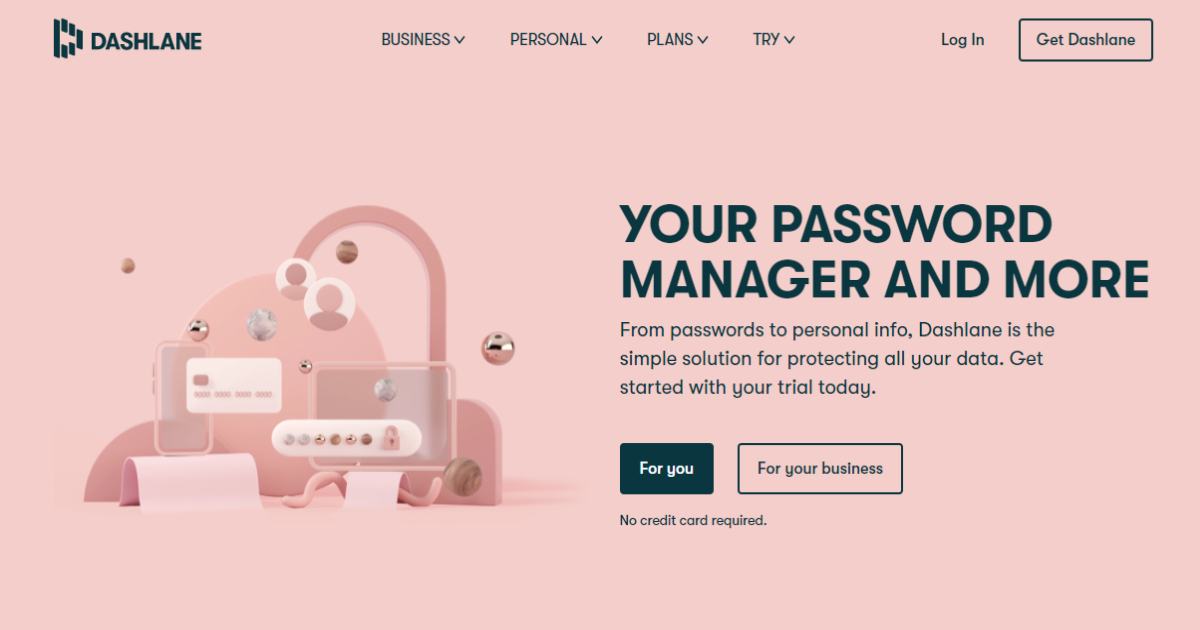
Dashlane is a great password manager. It can be accessed from all devices. It creates strong passwords, monitors your accounts, and informs you when to change passwords or if there is suspicious activity.
The digital wallet feature allows you to securely store all your payment methods. This makes it easy to check out and fill out forms when shopping online. Although there is a free version, it has no real value. It can only store 50 passwords and will not sync them across multiple devices.
The premium plan costs $39.99 per user per annum (roughly PS30) and isn’t the most affordable. A Family subscription is available for $59.99 per annum and can support up to five users.
Dashlane apps can be downloaded for Windows, macOS, and Android, as well as browser extensions. The VPN is a reduced version of HotSpot Shield. However, it is not intended to replace the best VPN services. We prefer a lower price without the VPN.
2. LastPass
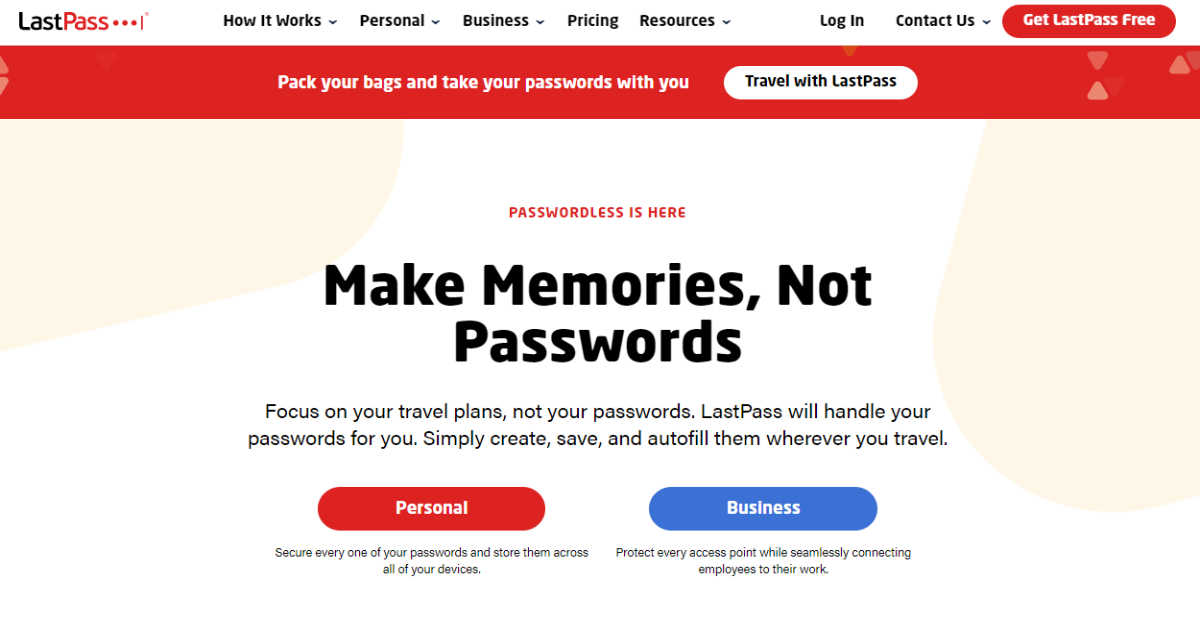
LastPass was chosen as the best overall because it provides a wide range of free features that allow users to access all they need without having to pay anything. It is accessible on all browsers and almost all smart devices. The paid version offers enhanced sharing capabilities and more powerful features.
LastPass was developed by four developers tired of constantly having to decrypt and encrypt their password documents every time they changed them. It had seven million users by the time LogMeIn bought it in 2015. The company has only 30 employees.
It also supports Android, iOS, and Windows Phone apps. It employs industry-standard AES256-bit encryption. LastPass also provides multi-factor authentication (MFA), allowing users to access their account via a smartphone or fingerprint.
LastPass’s free plan includes unlimited passwords, multiple device sync, one-to-1 encrypted password, and information sharing. It also offers a digital wallet that stores and automatically fill out credit card information. It is a strong option that we recommend and has been voted the best overall password manager.
3. 1Password
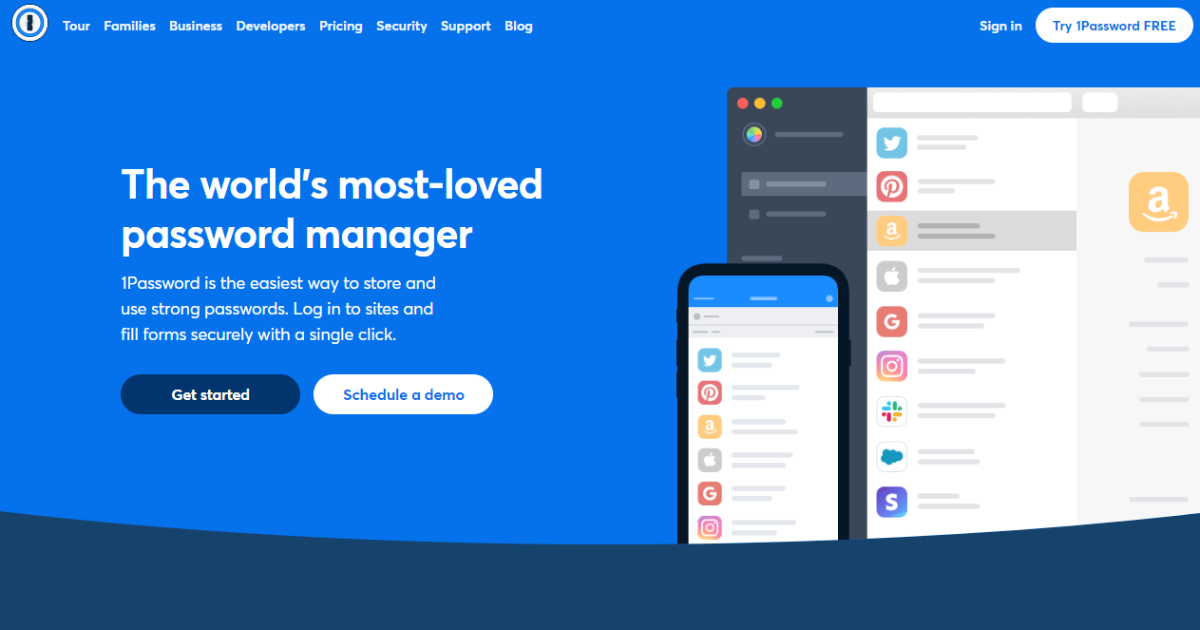
1Password is no longer leaving non-Apple users behind. 1Password’s Windows app is now feature parity with its Mac application, and the company’s first Linux app will be launched in 2021. Although the iOS and Android mobile apps may not be as flexible as desktop interfaces, they are simple to use and offer autofill.
You can also download standalone extensions for Brave Chrome, Edge Firefox, Safari, Brave, and Edge. They are compatible with all web browsers and now allow for biometric logins. Chrome Extension brings 1Password to Chromebook Users. You can also access 1Password through the company’s website.
1Password’s most important feature is the Travel Mode. This deletes sensitive data from devices (you’ll be able to get it back later) so that border-control agents and snoopers can’t find them. 1Password has excellent form-filling capabilities and true 2-factor authentication.
1Password recently started offering “masked email addresses” (opens in a new window) to increase privacy, thanks to a deal with Fastmail. You must subscribe to both services.
1Password users can send temporary weblinks to anyone to share information such as passwords that have been saved in 1Password. You don’t need to be a subscriber to 1Password.
4. RoboForm Everywhere
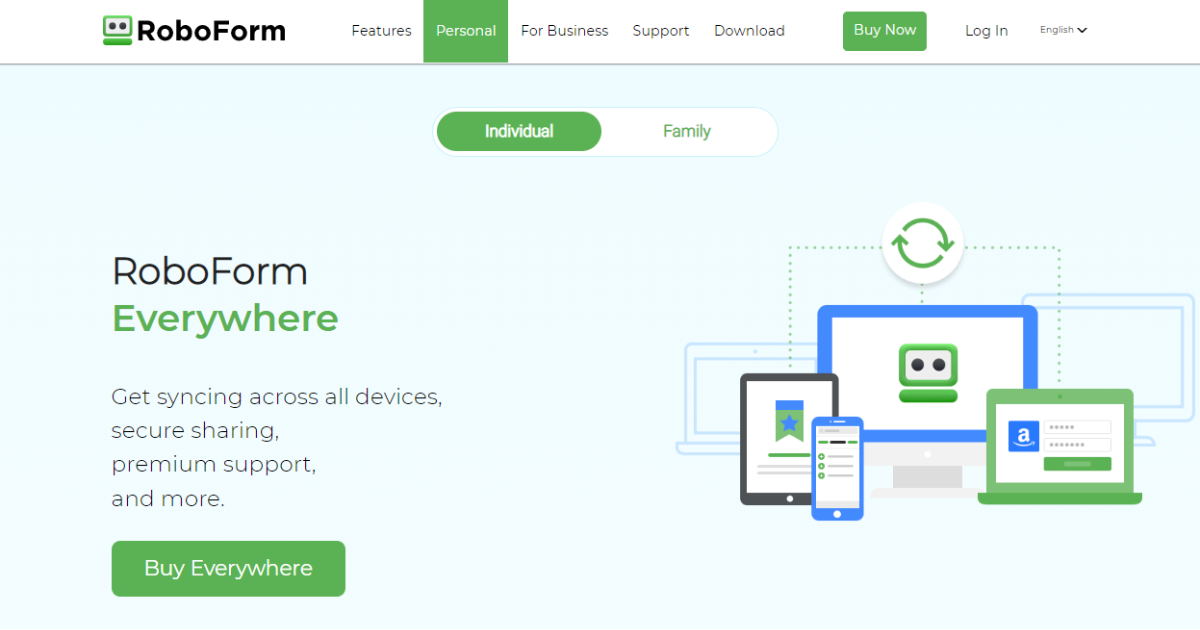
RoboForm Everywhere is capable of managing passwords and strong form filling. RoboForm’s web vault is an excellent addition to an already great product.
The current RoboForm version is easy to use if you’re familiar with the password manager file system. RoboForm is an excellent password manager. However, the menu system isn’t as intuitive or slick as some of its competitors.
5. NordPass
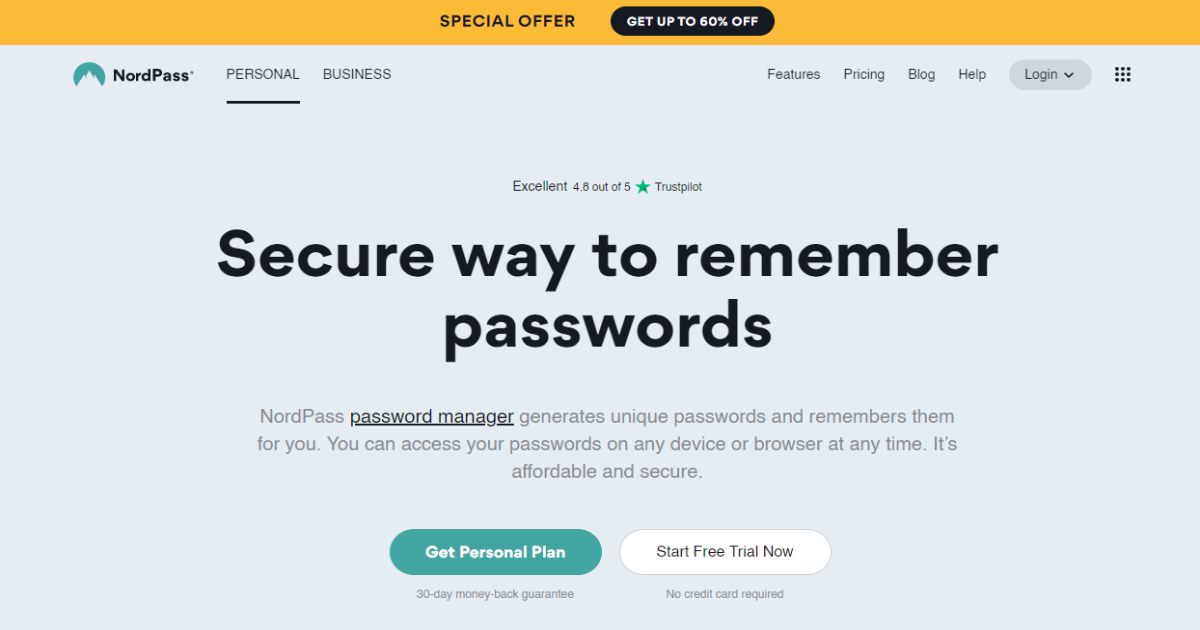
NordPass is a product of NordVPN. It offers all the basic password-manager features, even the free tier. The design is simple and consistent, making it easy to use. It also supports biometric login for desktop apps.
Although we found it a little strange that Nord had to create an account for the entire company and then a WordPress account for each individual, this was quickly resolved; the Premium plan has a limit of six devices that can be logged in at once, which is a bit odd. However, it will not affect many users.
WordPress Premium is $60 per user per year, nearly twice the price of other password managers. However, WordPress Premium still offers fewer bells and whistles than some of these well-known brands. Keep an eye out for WordPress sales that can bring the Premium plan down as low as $18 per year.
Last thoughts
Many of these options offer a free trial or tier so that you can try them out and decide if they suit your needs. You might find this tutorial helpful if you have never used this app.


